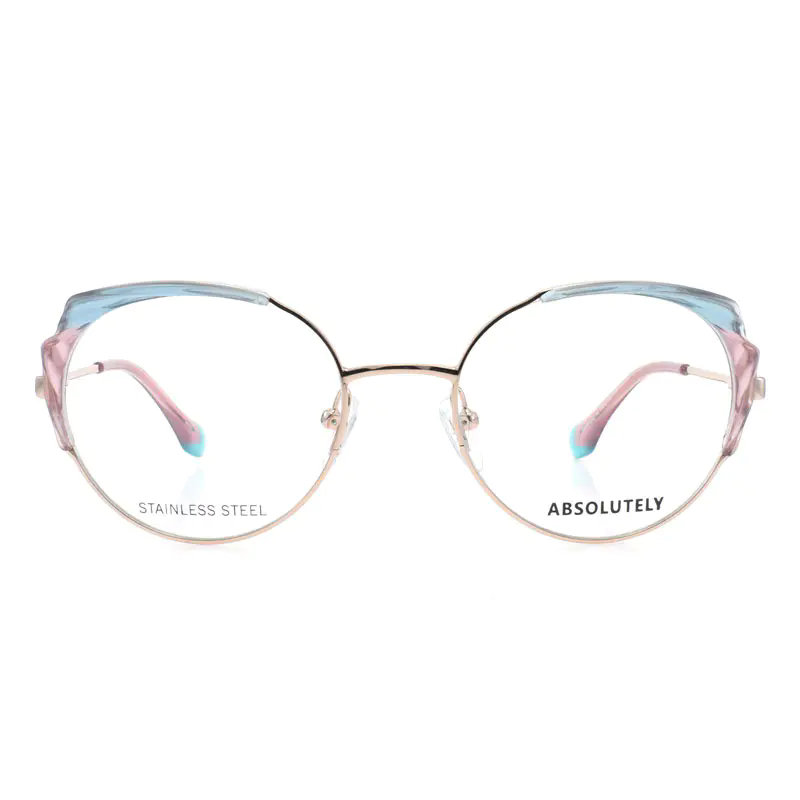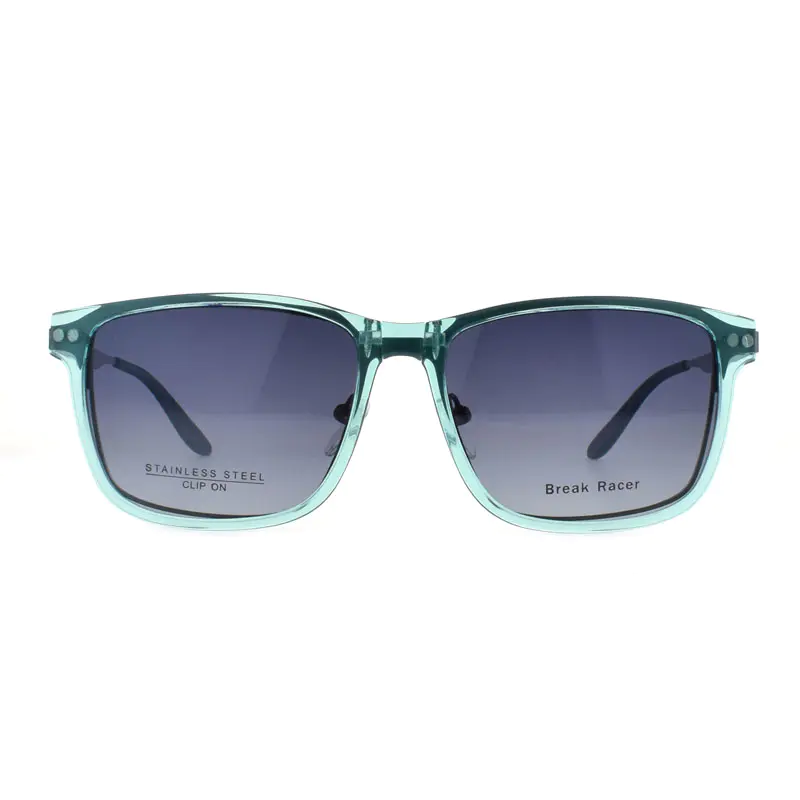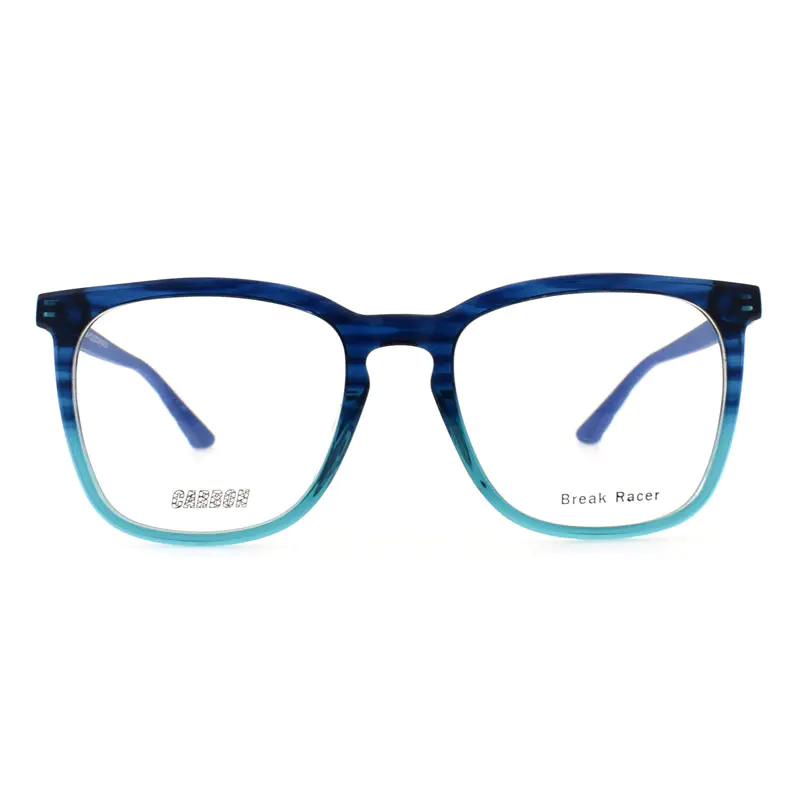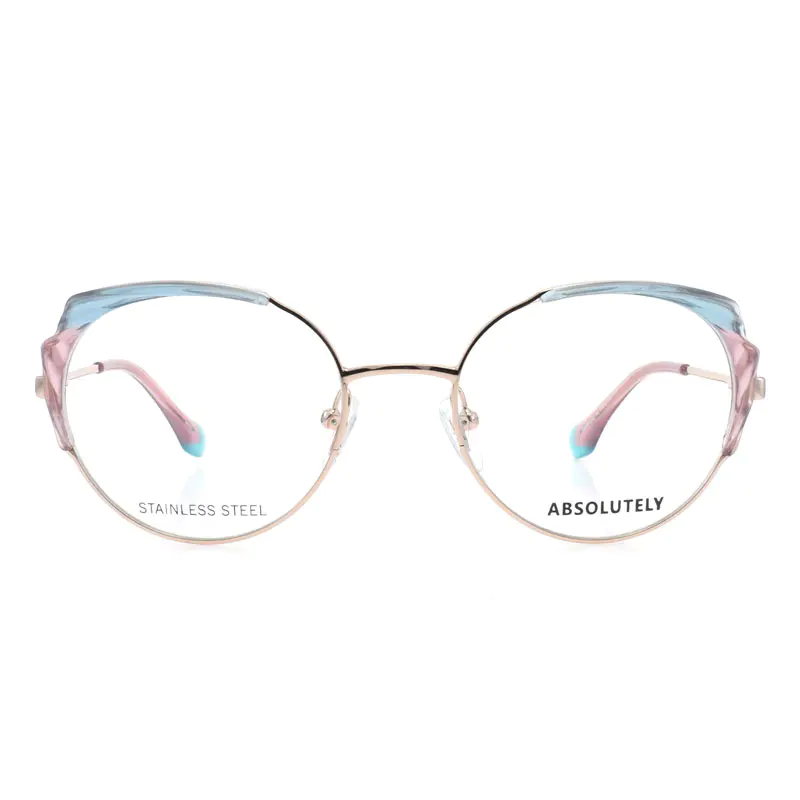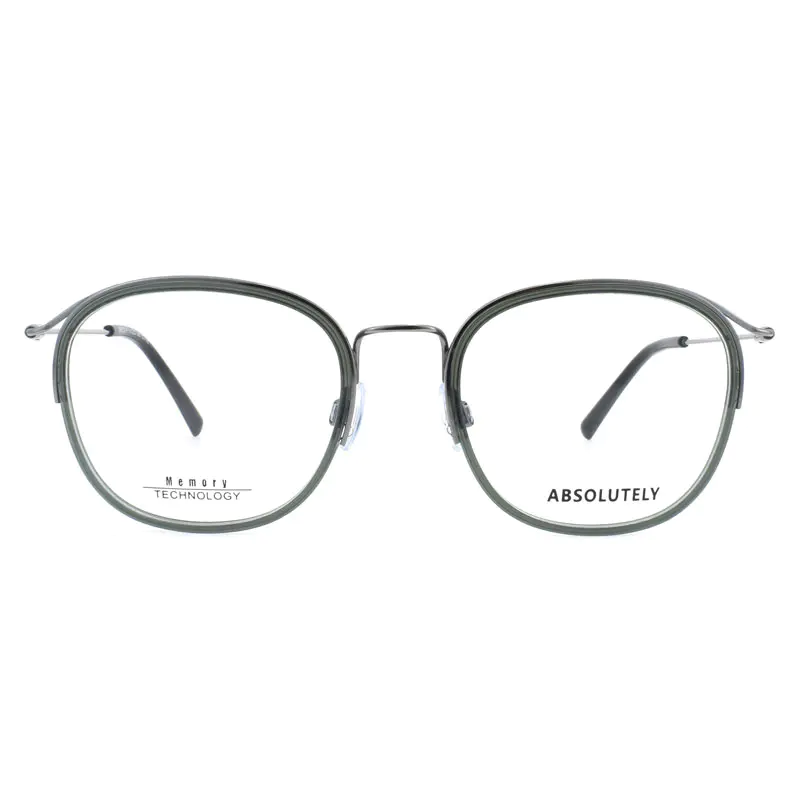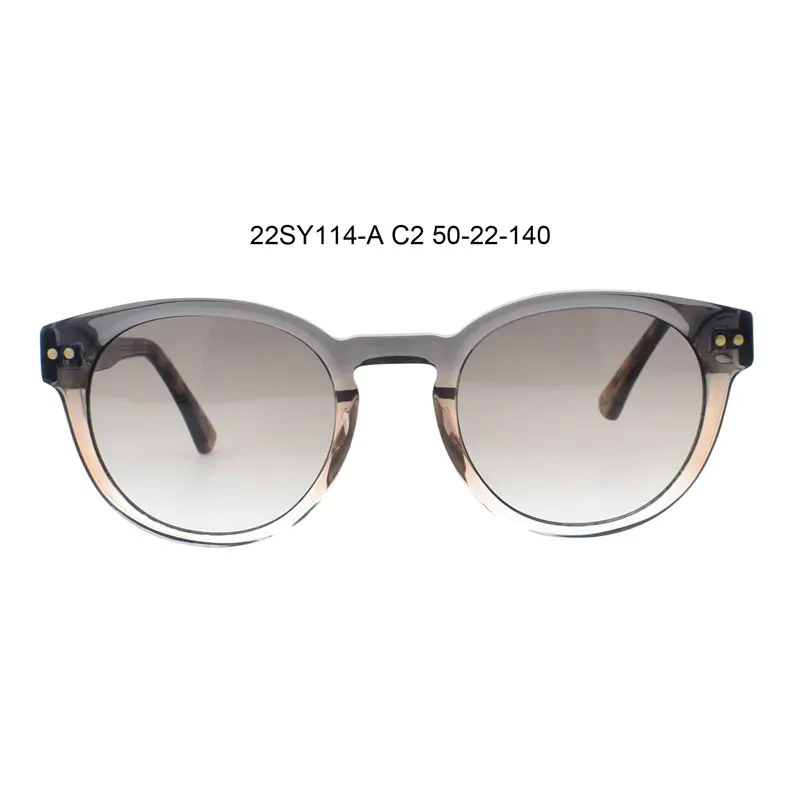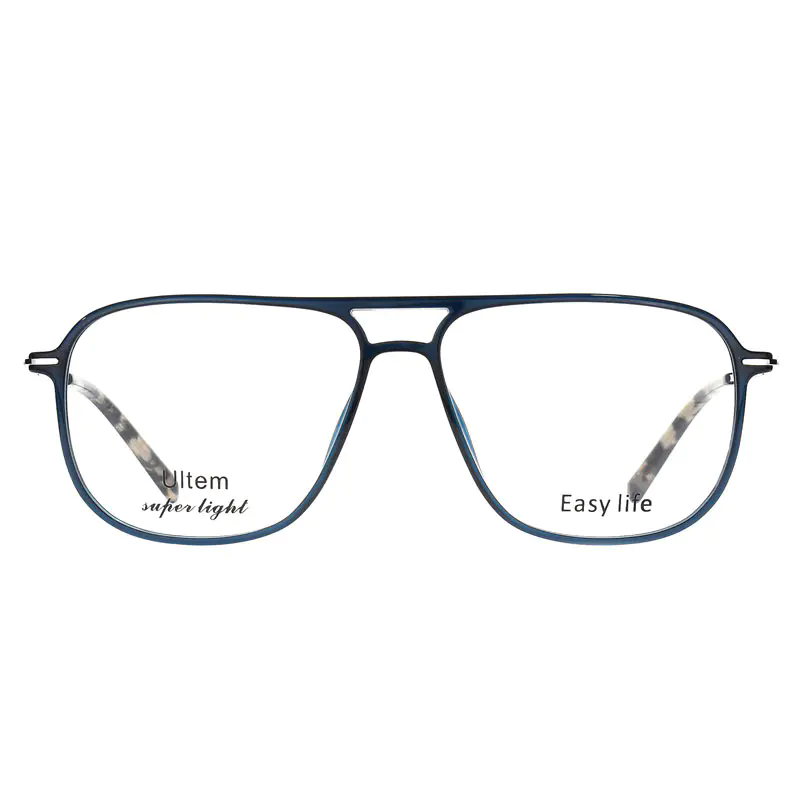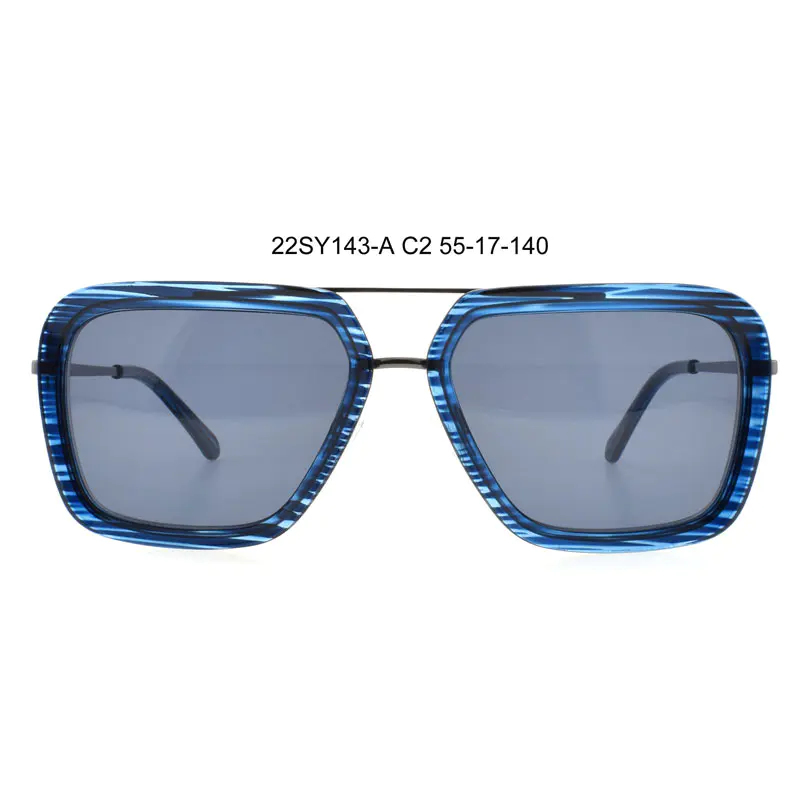Why Are Metal Optical Frames Redefining Durability, Style, and Visual Precision?
Metal optical frames have become one of the most trusted eyewear choices due to their structural stability, sleek aesthetics, and ability to support a wide range of lens prescriptions.
What Defines High-Quality Metal Optical Frames?
Metal optical frames are engineered from materials such as stainless steel, titanium, memory metal, aluminum, and nickel-silver alloys. These materials are valued for high tensile strength, corrosion resistance, aesthetic rigidity, and precise shaping accuracy. Compared with plastic frames, metal frames provide a more refined structural contour, improved adjustability, and longer product lifespan.
A strong foundation of premium materials ensures that the frame can support various lens types—single-vision, progressive, blue-light lenses, or prescription lenses requiring high-index materials. The clean line geometry of metal frames makes them popular for both professional and lifestyle settings.
Core Design Objectives
-
Ensure comfort during long-term wear
-
Maintain strong structural stability
-
Deliver a refined and minimalistic aesthetic
-
Offer flexibility for optical adjustments
-
Achieve lightweight performance without sacrificing strength
To evaluate frame quality, users often consider weight, rigidity, hinge type, corrosion resistance, and nose-pad adjustability. Precision plays an essential role in optical performance, as slight distortions in frame shape can affect lens alignment and visual accuracy.
Product Specification Table
| Parameter Category | Specification Details |
|---|---|
| Material Options | Stainless steel, titanium alloy, memory metal (beta-titanium), aluminum-magnesium alloy, nickel-silver alloy |
| Frame Weight | Typically 18–28g depending on material and design |
| Corrosion Resistance | High resistance to sweat, moisture, and environmental oxidation |
| Hinge Type | Standard hinge / spring hinge / integrated elastic hinge |
| Surface Finish | Electroplating, ion plating, matte brushing, sandblasting |
| Adjustable Components | Nose pads, temples, temple tips |
| Lens Compatibility | Single-vision, bifocal, progressive, high-index, polycarbonate |
| Durability Rating | High deformation resistance, excellent fatigue strength |
| Style Options | Full-rim, semi-rimless, rimless, geometric designs |
These specifications allow metal optical frames to serve diverse user needs—from ultra-light titanium frames for daily comfort to high-strength stainless-steel options for professional environments.
Why Do Consumers and Professionals Prefer Metal Optical Frames?
The preference for metal frames continues to grow due to their balance of strength, comfort, and sophisticated appearance. For optical retailers, metal frames represent a high-value category that appeals to a broad demographic. Their benefits vary across several performance factors:
Durability and Resistance
Metal frames withstand impact, bending, and daily handling far better than most plastic materials. Titanium, for example, offers exceptional fatigue strength and is nearly corrosion-proof, making it ideal for long-term wear in humid or high-temperature environments.
Lightweight Comfort
Advanced metal alloys, especially beta-titanium and aluminum-magnesium, offer ultra-light construction without compromising stability. This reduces pressure on the nose bridge and temples, providing enhanced comfort for extended wear.
Precision and Adjustability
Metal frames allow opticians to perform highly accurate adjustments, ensuring correct optical alignment and improved visual comfort. Adjustable nose pads also enhance fit and reduce slippage.
Aesthetic Versatility
Metal frames often project a sophisticated, minimalist, and professional style. Thin contours create a clean profile suitable for corporate settings, fashion-forward users, and everyday wearers.
Material Safety
Hypoallergenic metal options—particularly titanium and stainless steel—reduce the risk of skin irritation, making them ideal for consumers with sensitive skin.
Longevity and Cost Efficiency
Because metal frames retain shape and structural integrity longer than many plastic frames, they provide cost efficiency over time.
These advantages make metal optical frames highly competitive in both traditional eyewear markets and emerging digital-eyewear categories.
How Are Metal Optical Frames Manufactured and Optimized for Performance?
Manufacturing metal optical frames involves a series of precision-driven processes that include material selection, molding, welding, plating, assembling, and quality inspection. Each stage affects durability, comfort, and long-term performance.
Material Forming and Cutting
High-grade metal sheets or bars are processed using CNC cutting, laser shaping, and stamping. These techniques ensure accurate geometric lines and consistent frame symmetry.
Welding and Structural Reinforcement
Rim connections, bridge welding, and hinge assembly require micron-level precision to guarantee stability. Techniques such as laser welding are used to prevent deformation during high-temperature processing.
Surface Treatment for Longevity
Surface finishing protects the frame from oxidation and enhances its visual appeal. Ion plating and electroplating create durable color layers resistant to fading and corrosion.
Assembly and Adjustment
Nose pads, hinges, and temple tips are assembled manually or semiautomatically. Optical specialists adjust angles—pantoscopic tilt, bridge width, and temple curve—to optimize comfort and lens alignment.
Quality Inspection and Stress Testing
Products undergo extensive testing, including:
-
Deformation and bending tests
-
Corrosion resistance evaluations
-
Hinge opening-cycle tests
-
Sweat resistance tests
-
Weight and balance assessments
These steps ensure reliable performance across various usage conditions.
Sustainability Trends
The manufacturing sector increasingly integrates eco-friendly methods, such as recyclable titanium alloys, reduced-chemical plating, and energy-efficient processing.
The result is a structurally robust, aesthetically refined, and environmentally responsible eyewear product built for modern consumers.
What Future Trends Will Shape Metal Optical Frame Innovation?
Metal optical frames are advancing rapidly due to improvements in material science, smart-device integration, and customization technologies. Several major trends are reshaping the category:
Intelligent Eyewear Integration
Metal frames are ideal for supporting embedded sensors, augmented reality components, and wearable-tech devices due to their stability and heat resistance. Future designs may incorporate:
-
Smart health-monitoring features
-
Integrated display technologies
-
Adaptive lenses
-
Gesture-control components
Hyper-Lightweight Alloy Development
Next-generation metal alloys will focus on enhanced flexibility and reduced mass. Memory metals capable of returning to their original shape after bending will become more common.
Customization and Precision Fit
3D scanning and digital modeling allow manufacturers to produce highly personalized fits. Metal frames benefit from precise digital shaping and modular design capabilities.
Expanded Color and Texture Options
Advanced electroplating and chemical coloring techniques support expanded color palettes, matte textures, and brushed metallic finishes that appeal to fashion-conscious users.
Sustainable Manufacturing Systems
Demand for eco-friendly eyewear encourages recycled titanium sourcing, water-saving plating processes, and reduced-waste production cycles.
Enhanced Comfort Engineering
Ergonomic improvements such as pressure-distributed nose pads, flexible temples, and temperature-adaptive materials will create superior wearability.
With technology and design priorities shifting toward personalization, sustainability, and digital integration, metal optical frames are poised to remain a dominant eyewear category for decades.
Common FAQs About Metal Optical Frames
Q1: Are metal optical frames suitable for people with sensitive skin?
A: Yes. Frames made from titanium, stainless steel, and nickel-free alloys are hypoallergenic and suitable for sensitive skin. These materials resist irritants, moisture, and oxidation, reducing the risk of redness or allergic reactions.
Q2: Do metal frames deform easily compared to plastic frames?
A: High-quality metal frames—especially titanium and memory metal—offer superior resistance to deformation. They can retain structural shape even under bending stress, and opticians can easily adjust them without weakening the material.
Conclusion: The Value of Choosing High-Quality Metal Optical Frames
Metal optical frames combine durability, lightweight comfort, precision engineering, and sophisticated minimalism. They offer strong structural performance, high adjustability, and compatibility with a wide range of lens types, making them a preferred choice in the global eyewear market. As manufacturing advances embrace smart-tech integration, eco-friendly materials, and digital customization, metal frames will continue to lead innovation and elevate user experience.
HIVISION delivers premium-grade metal optical frames built with advanced production technology, strict quality standards, and market-proven durability. For customized solutions, wholesale inquiries, or detailed product specifications, contact us to explore tailored options that meet both design and performance requirements.
-
- What Makes Ultem Optical Frames the Smart Choice for Modern Eyewear Users?
- What Makes Sports Sunglasses the Ultimate Choice for Outdoor Performance and Protection?
- What Makes Sunglasses the Ultimate Fusion of Style, Protection, and Innovation?
- Why Are Clip-On Glasses Becoming the Go-To Accessory for Prescription Wearers?
- Are Cat Eye Sunglasses Flattering on All Face Shapes
- What Metal Optical Frames Offer The Lightest Comfort


